Nexus 7 (2013) - Mini Review
by Brian Klug on July 27, 2013 12:54 AM EST- Posted in
- Tablets
- Snapdragon
- Qualcomm
- Android
- Mobile
- APQ8064
- Nexus 7
- Android 4.3
Last year the Nexus 7 debuted with a Tegra 3 SoC, which for reminder consisted of a 4+1 architecture of ARM Cortex A9 CPUs, with the 4 A9s built on 40nm G, and the +1 “shadow core” A9 built on 40nm LP (TSMC’s 40 LPG process), accompanied by ULP GeForce GPU with 12 cores running at a max GPU clock of 416 MHz. The exact SoC was NVIDIA’s Tegra 3 T30L, which could run one A9 at up to 1.3 GHz and all A9s at up to 1.2 GHz.
Rather than the relatively logical upgrade path of going to NVIDIA’s Tegra 4 SoC (I’ve heard all manner of speculation about what happened there), the new Nexus 7 switches to Qualcomm’s APQ8064–1AA, a version with 4 Krait 300 CPU cores (yes, Krait 300, not 200) running at up to 1.5 GHz and Adreno 320 graphics. Rather than use a PoP and LPDDR2, this specific APQ8064 variant goes to PCDDR3L–1600 MHz instead, including 4, 4Gb discrete 1.35V SK-hynix DRAM devices off to the side (more on the opposite side of the PCB) adding up to 2 GB of RAM. Qualcomm's Snapdragon S4 Pro and Snapdragon 600 branding gets confused here, although Qualcomm is calling the APQ8064 inside the Nexus 7 (2013) S4 Pro, it's more like an underclocked or lower binned Snapdragon 600.
At this point APQ8064 is probably the most well understood SoC in recent memory (so much so that I’m pining for devices to include something different just from an academic perspective) so I’ll spare the very verbal discussion about its performance.
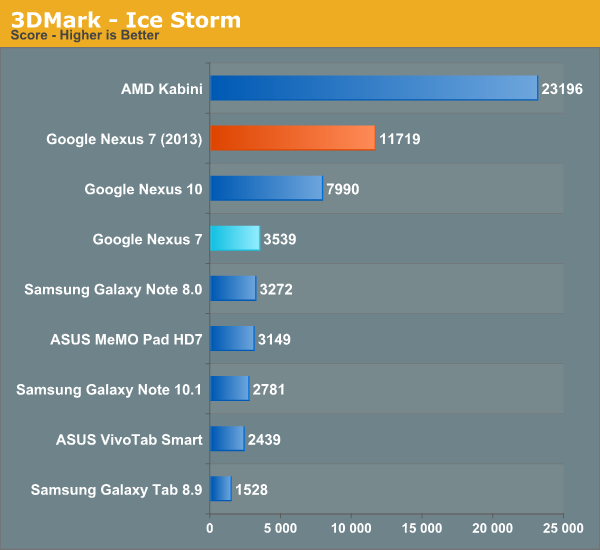



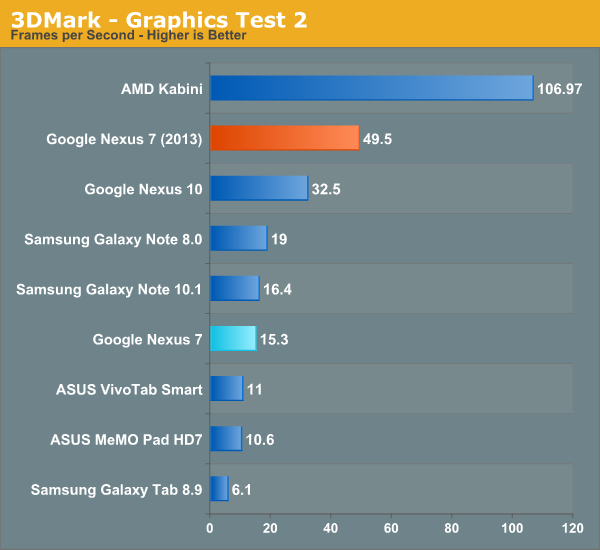
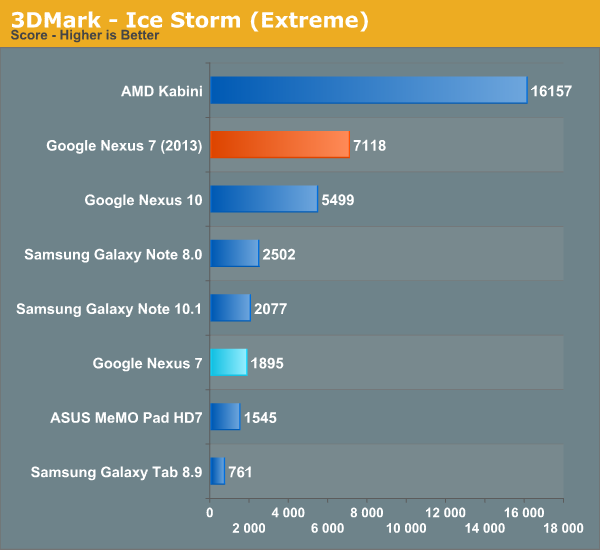

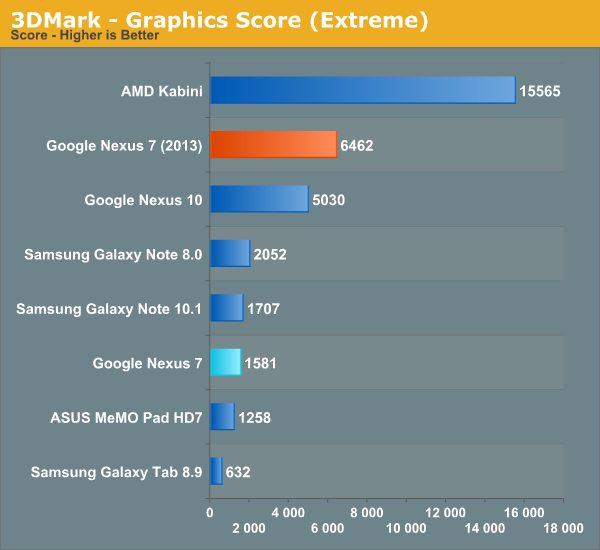

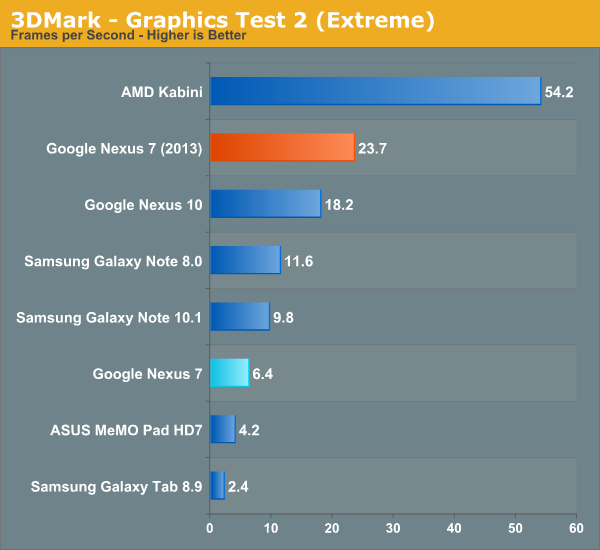


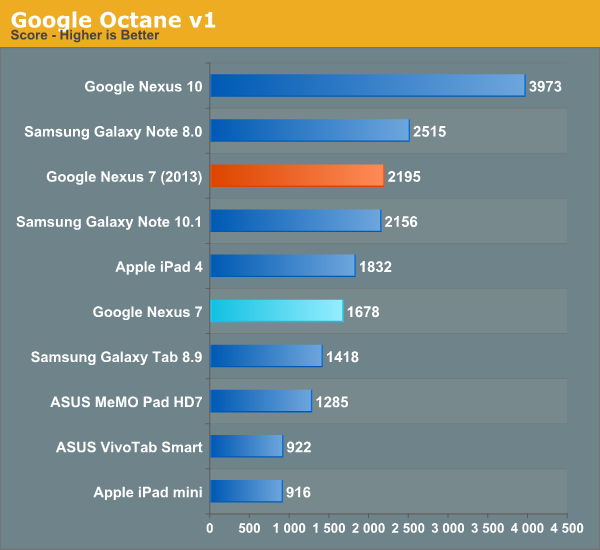
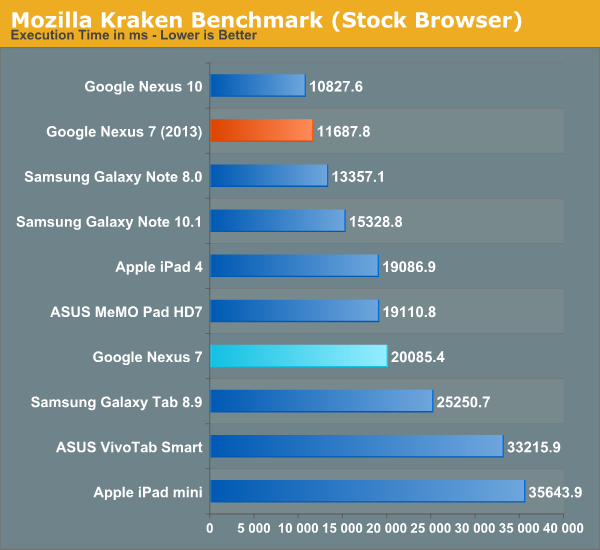
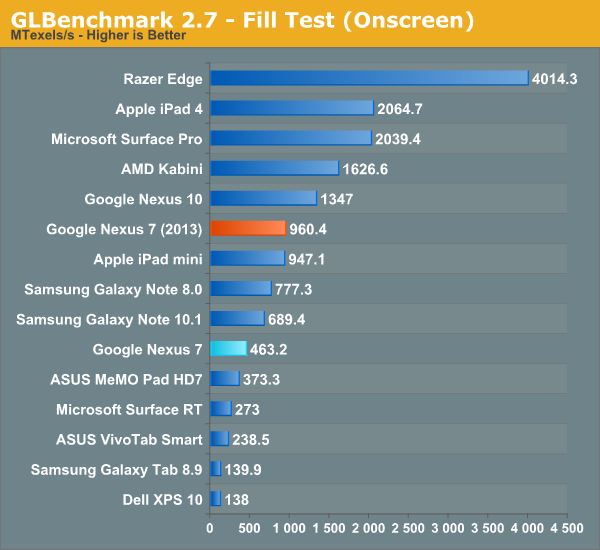
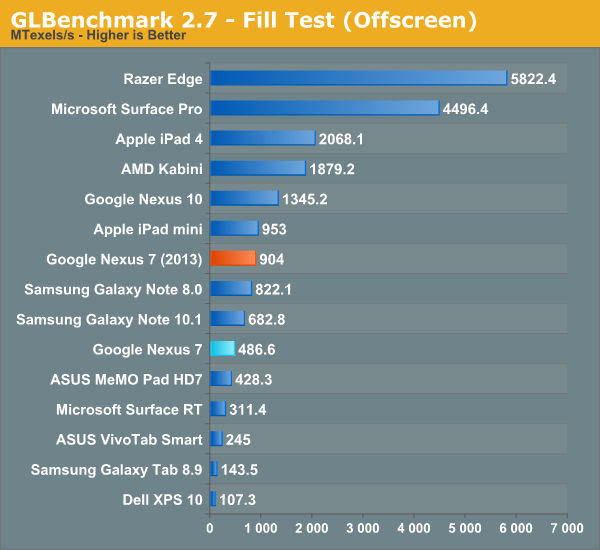
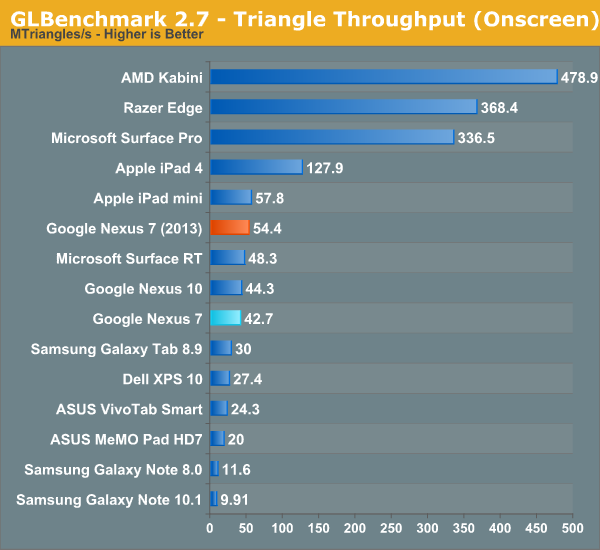
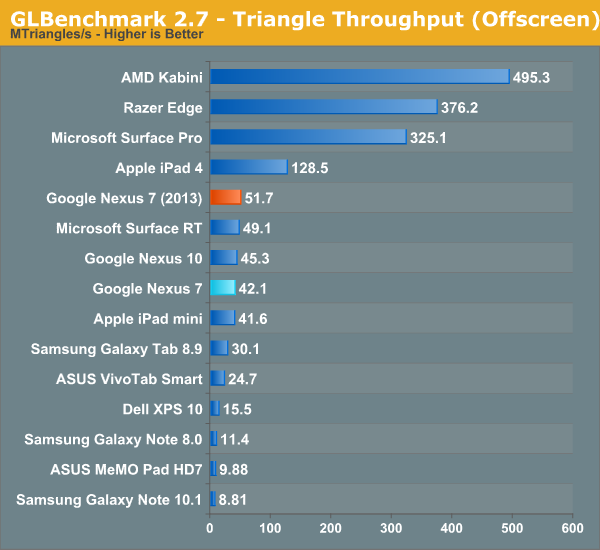
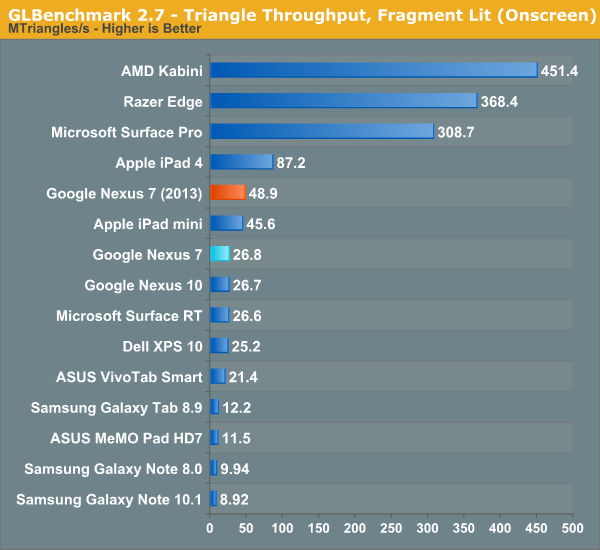
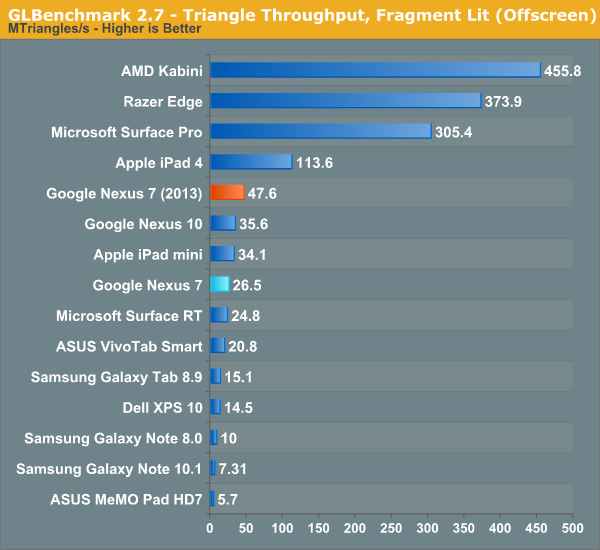
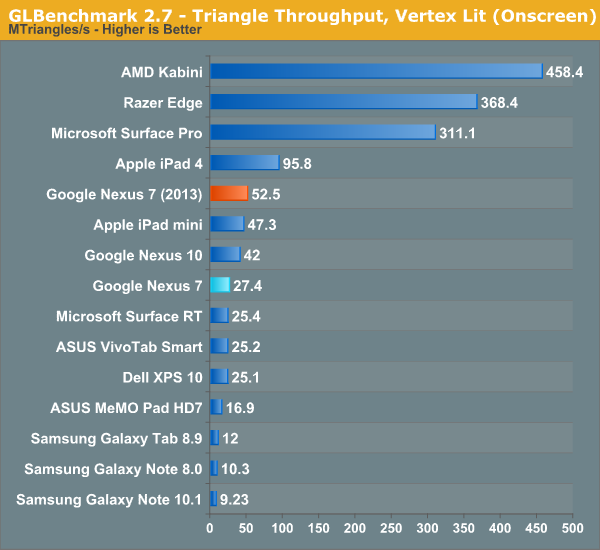
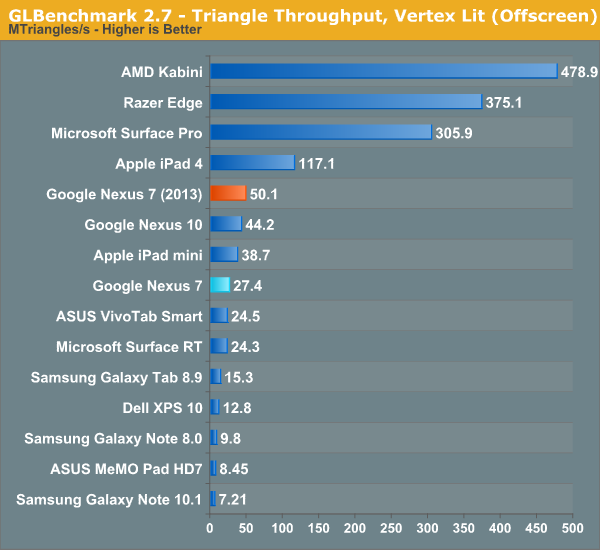

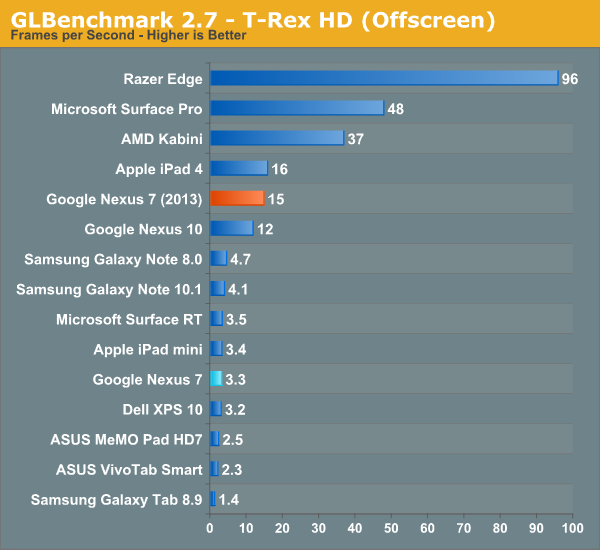
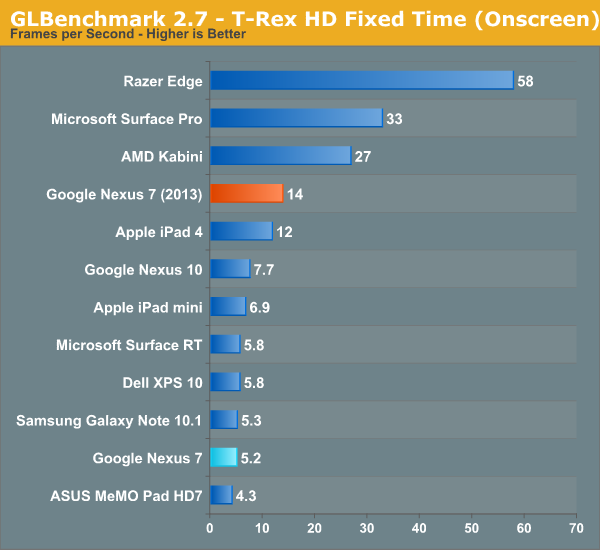
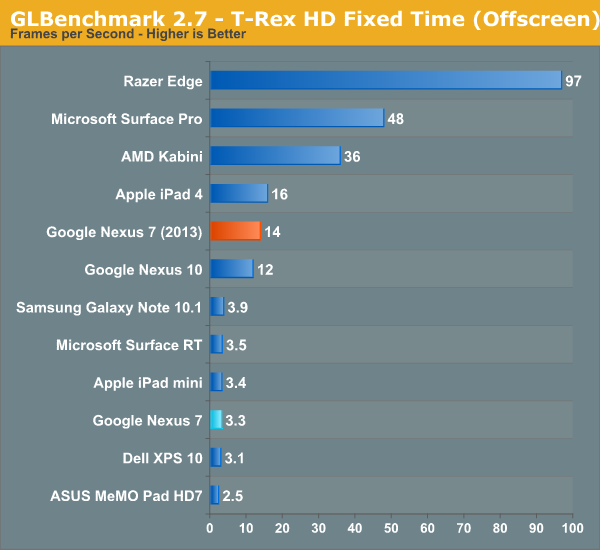
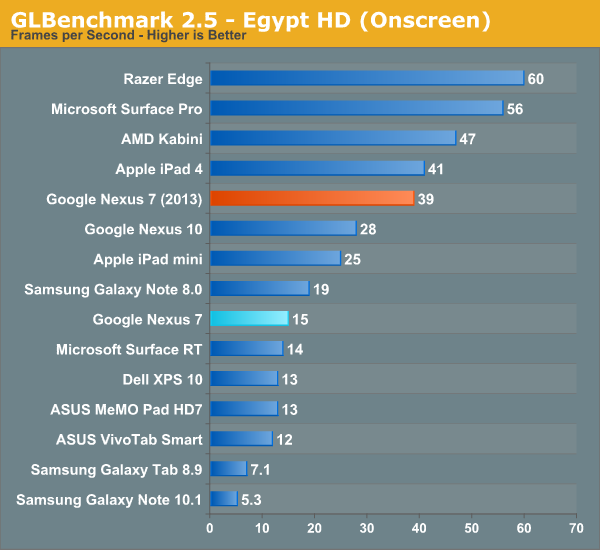
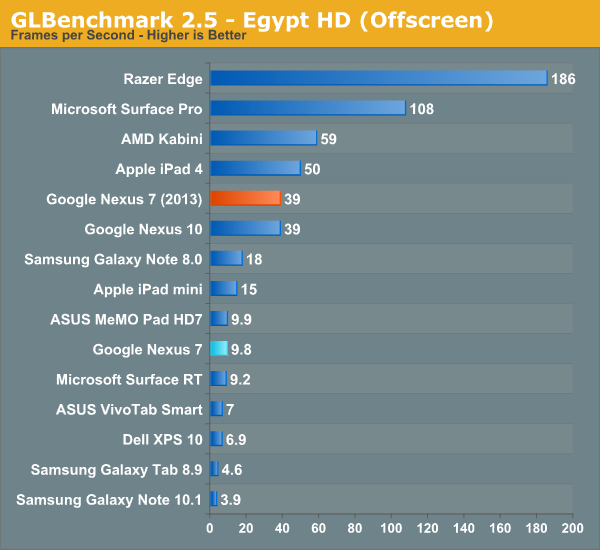
Suffice it to say, moving from 1.2–1.3 GHz Tegra 3 to 1.5 GHz APQ8064 represents a big jump forwards in performance. Google claimed 1.8x improvement on CPU performance, and 4x improvement on GPU, which gets validated pretty much consistently through the benchmarks. I never felt like Tegra 3 was a slouch by any means (performance was more I/O bound on the OG Nexus 7, which we’ll talk about in a moment), but the new Nexus 7 has ample performance for the considerable increase in screen resolution.
Dat eMMC
It wasn’t any secret with the original Nexus 7 that much of the real world performance was gated by storage I/O throughput – we wrote about it after all – and storage performance was a common complaint while multitasking on a few other previous and similar era ASUS tablets. Most of the time performance was acceptable, and for $200 you can’t complain too much about things, the issue was that further on in the life of the tablet performance began degrading somewhat notably, leading to complaints.
Obviously the first thing I did on the Nexus 7 (2013) was run Androbench with the same 100 MB settings to test and see what out of box I/O performance looks like. Things are much better with the new Nexus 7 than they were with the previous one, so at a high level all is good.
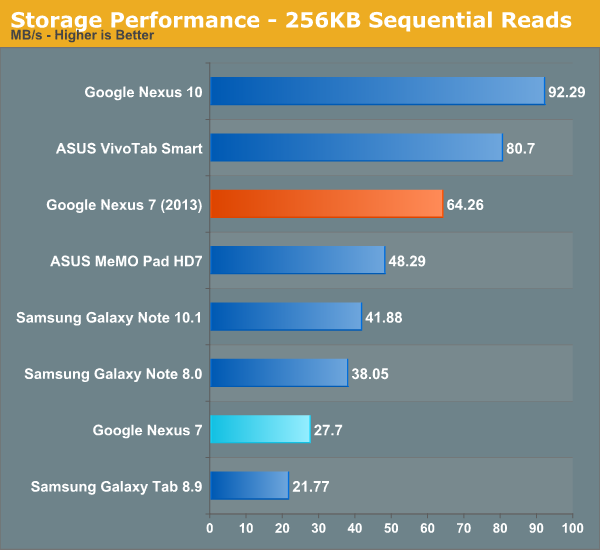
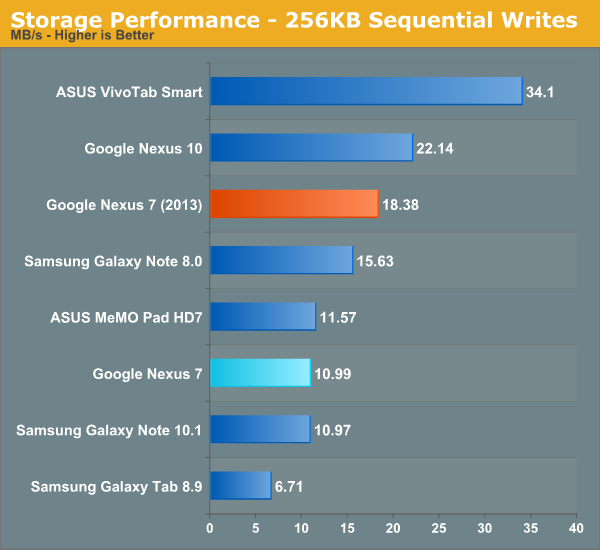
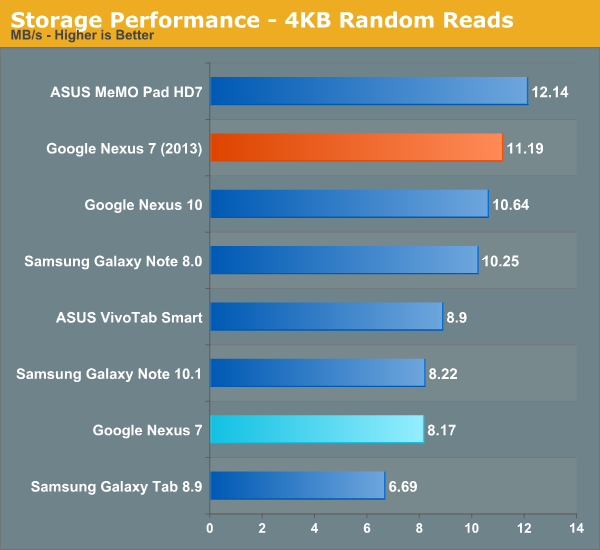

The story actually is a bit more involved however. One of the big problems was that the slowness which occurred with the prior Nexus 7 took device aging to appear – it was great for the first few months, but after you started loading it things tailed off. The new Nexus 7 (2013) with Android 4.3 includes support for fstrim, essentially idle garbage collection, which TRIMs the eMMC when a few conditions are met – the device is idle, screen off, and battery above roughly 70-percent. I’m told that TRIM support has been part of the eMMC standard since around version 4.2, it was just a matter of enabling it in software. The result is that the new Nexus 7 shouldn’t have these aging affects at all. Better yet, fstrim support has also been added to the old Nexus 7 with as of the Android 4.3 update, so if you’ve got a Nexus 7 that feels slow, I/O performance should get better after fstrim runs in the background. I'm checking on whether the other Nexus devices have also had TRIM support added. I would consider the slow storage aging problem fixed as of now, and Google took the eMMC and storage I/O performance issues with the previous Nexus 7 to heart for this version.


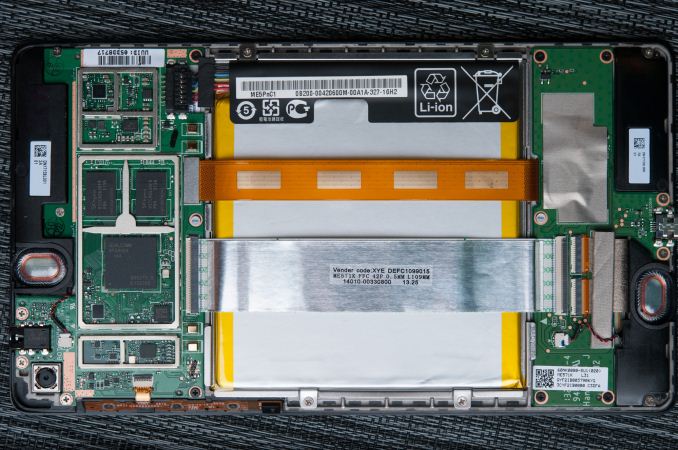
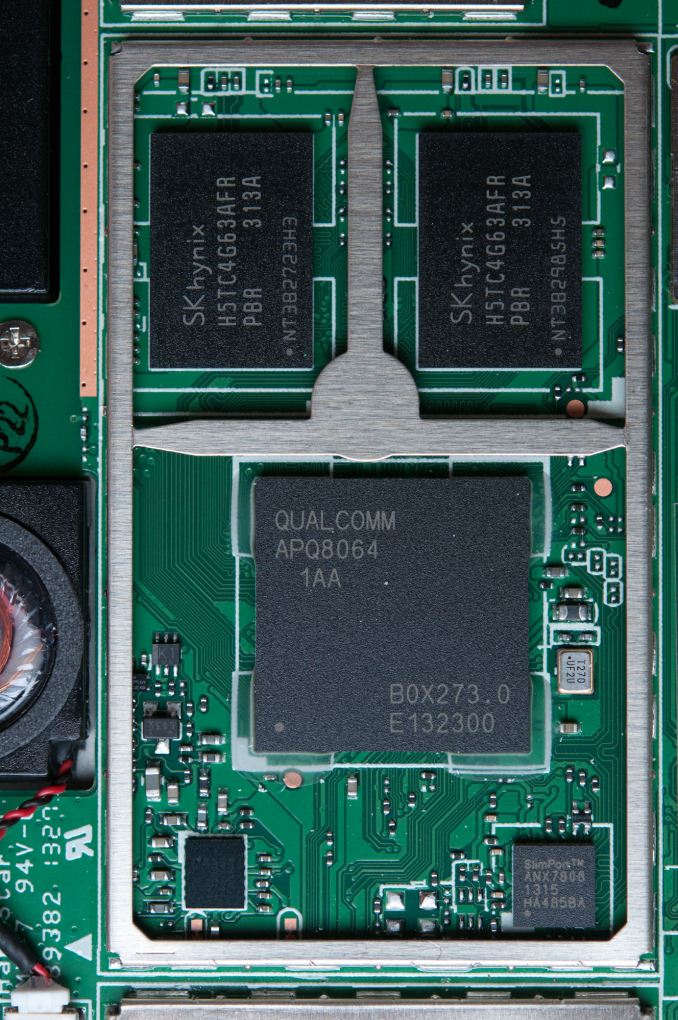














252 Comments
View All Comments
hughlle - Sunday, July 28, 2013 - link
Not to mention my nexus ten has no option for LTE, so this solution is that i'm only allowed so much on my tablet and if i want something else i have to go back home and get it. Furthermore not all of us have the money or are willing to buy a seperate sim contract so that they can access cloud data on the move. I do not want to pay £7.50 a month so that i can access data that i could have on an sd card for free.Further more it makes absolutely no sense to refuse to allow SD cards when i can happily plug a flash drive into the usb socket. If they don't want us using additional flash memory, then why allow for the ability to use it via USB at all? It's comes off looking like they are happy for us to have additional local storage, but do not wish for us to have it in a convenient manner.
BrandoHD - Thursday, August 1, 2013 - link
I currently live in one of those non-US market and I have a 32 GB 2012 N7 and a 16 GB N4, the N7 has 21 GB free and the N4 has 9 GB free, and I hear every song or watch every movie that I want to hear/watch, through the use of the cloud, what you have there with non-expandable storage is a personal preference issue, it would do you well to remember that and not to create an issue for those in the so-called non-US markets.So the decision to not use expandable storage is not wrong, it is something you should get used too
Broo2 - Saturday, July 27, 2013 - link
One of the reasons Google is going away from SD expansion is that it confuses a majority of the populace. Most users need to have Gigabytes translated to a number of songs/photos/movies and cannot grasp the difference between internal and external (removable) storage. Google now needs to appeal to the iPhone mentality people (reminds me of the iPhone vs EVO video from a while back).I personally have about 30GB of (cherry-picked) music and I may choose 8-10 favorite albums and 200-300 favorite songs that i will listen to on a regular basis- which gives me about 20hrs of continious music in 5GB of 320kpps MP3s (or 12GB of FLAC).
...or I can use Spotify/Pandora/Mog/Rdio/Google and listen to 95% of all my music + new music that sometimes can catch on.
jcompagner - Sunday, July 28, 2013 - link
i find it always weird that "it confuses ta majority of the population"huh? which majority is that?
I never confused me, it never confused my people around me (even the not so tech savvy persons)
Also many of use are used to laptop/desktops that has "c" and "d" drives and so on (multiply drives)
thats how i see external storage, its just an extra "d" drive..
Kidster3001 - Friday, August 9, 2013 - link
There is no exapandable Memory on any mobile device.phillyry - Monday, July 29, 2013 - link
Agreed.At least the Nexus was bumped up to 16GB, 32GB from 8GB, 16GB but especially with the prices you're paying for a full sized iPad, you should be getting at least 32GB - it's just way to easy to fill that bad boy up.
32GB on a $229 model, on the other hand, maybe not so realistic but we can dream.
hrrmph - Saturday, July 27, 2013 - link
You nailed it: It's a nice upgrade, but, it definitely needs a Micro-SDXC slot, removable battery, and WiFi-AC to fix the most fundamental limitations that remain.fokka - Saturday, July 27, 2013 - link
you will never see a removable battery in a mainstream tablet. i'm sorry, but that's just the truth, as it seems.feteru - Saturday, July 27, 2013 - link
You're forgetting this is a $230 tablet that needs to stay light and thin somehow. As long as they continue to improve internal storage and make the connectivity better, I don't really have a problem with it on a tablet. And if you're so serious about having all of your music, get a real audio player like a RWA iMod or an HM801.Bob Todd - Saturday, July 27, 2013 - link
It's a *budget* tablet, get over the lack of AC. If the $400+ Nexus 10 refresh doesn't have AC wifi then you can bitch all you want. And as someone who's grown old while waiting to copy large amounts of data to a 64GB microSDXC card (< 15MB/s writes)...they aren't exactly the most amazing option for large data storage. Ideally all android tablets would have both microSDXC and USB OTG, but for my personal tablet if I have to choose one I'll got with OTG since the micro cards are just too damn slow. And asking for a removable battery in a mainstream tablet is just asinine. It isn't hurting anyone's sales because you and one other guy in Botswana are the only ones demanding that feature. The rest of the world realizes that if you have to carry some large(ish) battery around with you it might as well charge all of your devices (go to Amazon and type "Anker").